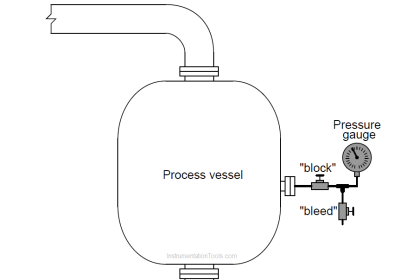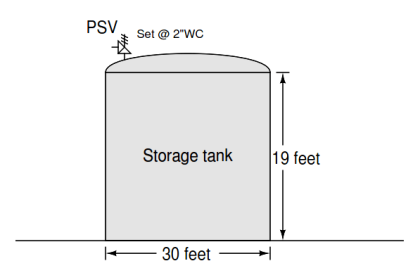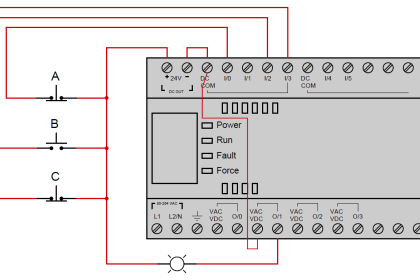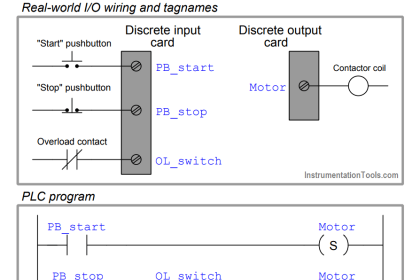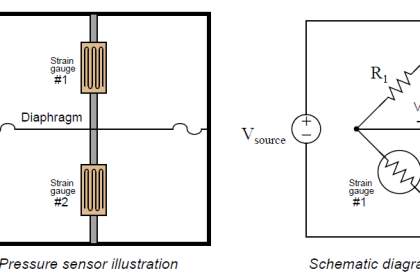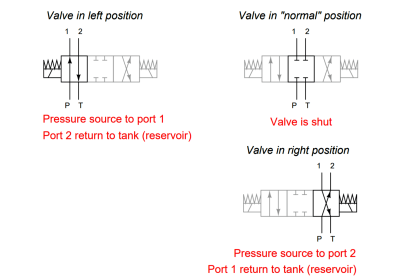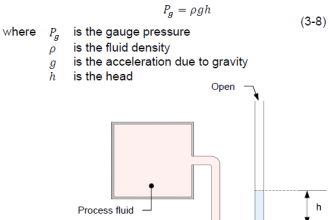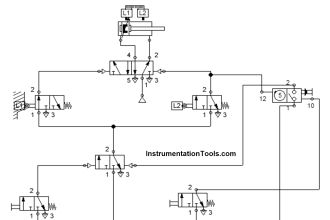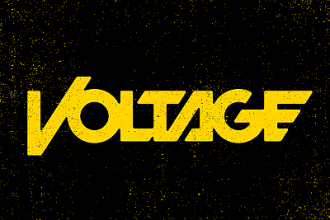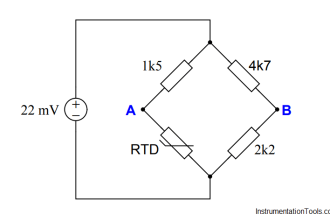A resistive tape level sensor is a two-wire element immersed in a liquid, which changes resistance as liquid level increases.
The principle is the same as placing your rubber-boot-covered foot in a pool of water: the deeper your foot is submerged, the further up your foot and ankle you feel the water’s pressure push the rubber boot against your skin.
A resistive tape stretches the entire height of the vessel, and contact is made between two resistive wires by the head pressure against the submerged length of the tape.
The greater the liquid level, the further the length that the two wires are in contact with each other, resulting in less resistance overall.
Examine the following resistive tape level measurement system and calculate the following, assuming
- a maximum tape resistance of 10 kΩ (i.e. resistance with zero immersion),
- a minimum resistance of 2 kΩ (i.e. resistance with total immersion),
- a linear relationship between tape immersion and tape resistance, and
- a total tape length of 15 feet:
Resistive Tape Level Sensor
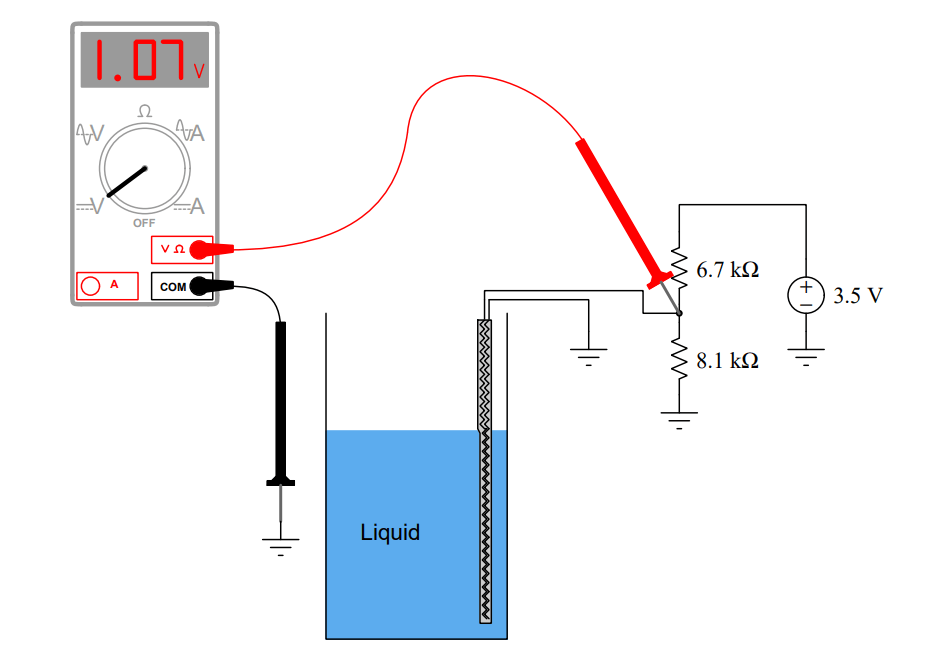
Tape resistance (Rtape) = ________
Immersion depth = ________
Share your answers & explanation with us through the below comments section.
Read Next:
- Tank Stilling Well
- Level Transmitter Errors
- Sump Tank Level Transmitter
- Magnetostrictive Level Sensor
- Guided Wave Radar Level Sensor
Credits: Tony R. Kuphaldt


